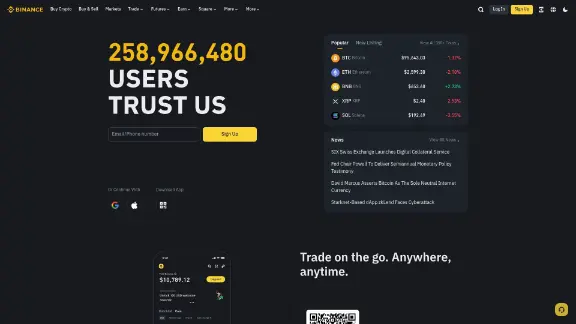Binance-Peg BUSD (BUSD)
Binance-Peg BUSD is a tokenized version of Binance USD (BUSD) designed to operate on the BNB Chain. It functions as a bridge to connect the original BUSD stablecoin with the BNB Chain ecosystem, enabling users to utilize BUSD's stability and liquidity within Binance's blockchain network. Initially, BUSD was launched on the Ethereum blockchain in collaboration with Paxos Trust Company. Binance-Peg BUSD extends its utility to the BNB Chain, offering faster and cost-effective transactions while maintaining a 1:1 peg to the US dollar. This pegged version is created through "wrapping," where original BUSD tokens are secured in a smart contract on Ethereum, and an equivalent amount of Binance-Peg BUSD is minted on the BNB Chain, ensuring a stable total supply across all networks.
Key features
- Maintains a 1:1 peg to the US dollar, supported by reserves held by Paxos Trust Company.
- Facilitates seamless transfers between Ethereum and BNB Chain networks.
- Utilizes the efficiency of the BNB Chain for quicker and more affordable transactions compared to Ethereum.
- Integrated into various decentralized applications (dApps) and services within the Binance ecosystem.

| Ticker | BUSD |
| Category | Stablecoins |
| Website | https://www.binance.com/en |
| @binance | |
| Contract Addresses | |
|---|---|
| binance-smart-chain | 0xe9...56 Copied! Copied! |
| optimistic-ethereum | 0x9c...39 Copied! Copied! |
| polygon-pos | 0x9c...39 Copied! Copied! |
| avalanche | 0x9c...39 Copied! Copied! |
How it works
The creation and use of Binance-Peg BUSD involve several steps:
- Original BUSD tokens are locked in a smart contract on the Ethereum blockchain.
- An equivalent amount of Binance-Peg BUSD is minted on the BNB Chain.
- Users can transact with Binance-Peg BUSD within the BNB Chain ecosystem.
- Binance-Peg BUSD can be converted back to original BUSD on Ethereum through a reverse process.
This mechanism ensures the total supply of BUSD remains stable across both networks.
Relationship with Binance and BUSD
Binance-Peg BUSD is closely linked to both Binance and the original BUSD stablecoin. As the creator and primary supporter of the BNB Chain, Binance plays a key role in developing and promoting Binance-Peg BUSD. The pegged version maintains a 1:1 relationship with the original BUSD, ensuring consistent value and interoperability. Changpeng Zhao, CEO of Binance, has emphasized the commitment to expanding the utility of stablecoins across blockchain ecosystems, providing users with more flexibility.
Use cases
Binance-Peg BUSD serves multiple purposes within the BNB Chain ecosystem:
- Used as a trading pair on decentralized exchanges (DEXs) on the BNB Chain.
- Utilized in liquidity pools and yield farming protocols.
- Facilitates quick and cost-effective transfers between Ethereum and BNB Chain networks.
- Serves as collateral or a stable asset in various decentralized finance (DeFi) protocols.
- Enables fast and low-cost transactions for merchants and users within the BNB Chain ecosystem.
Technology
Binance-Peg BUSD employs various technological components:
- Utilizes smart contracts on both Ethereum and BNB Chain for minting, burning, and transferring tokens.
- Employs a bridging mechanism to facilitate transfers between Ethereum and BNB Chain.
- Follows the BEP-20 token standard on the BNB Chain, ensuring compatibility with wallets and dApps.
